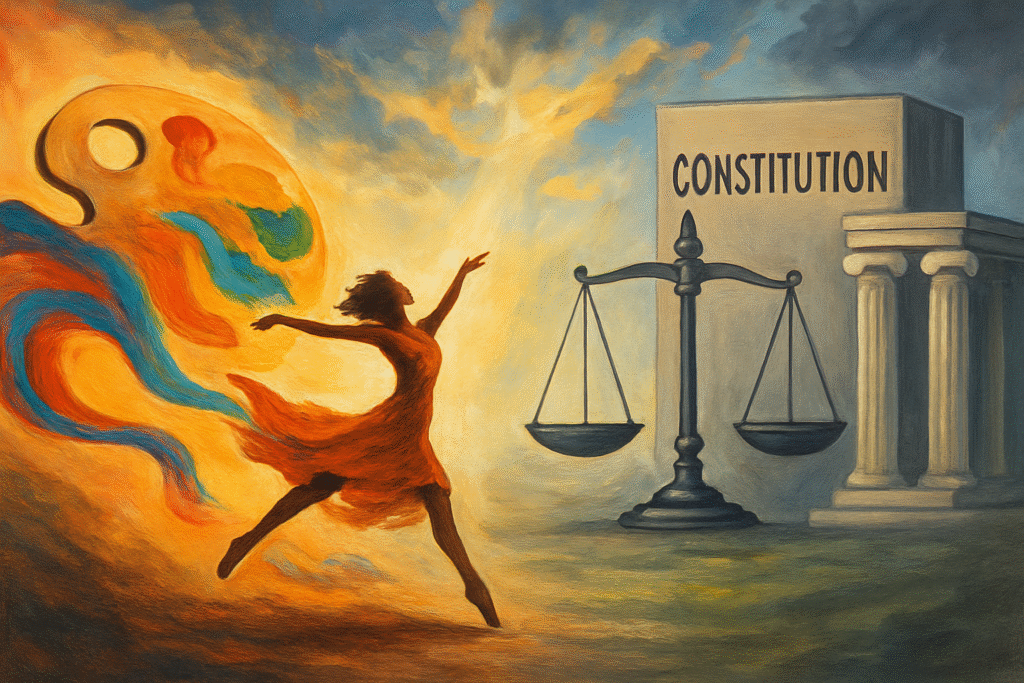Published On: October 7th 2025
Authored By: Garima Sherawat
Asian Law College
Abstract
Gender justice is an essential pillar of a fair and democratic society. In India, despite constitutional guarantees and numerous laws aimed at protecting women, gender-based crimes remain a major challenge. This article examines the legal framework that addresses crimes against women in India, evaluates its effectiveness, and highlights the gaps that still exist. It also discusses landmark judgments and suggests measures for strengthening gender justice in the country.
Introduction
Gender justice means ensuring fairness, equality, and protection for all genders, particularly for women who have historically been subjected to discrimination, violence, and socio-economic disadvantages. In India, women face crimes ranging from domestic violence, sexual harassment, rape, acid attacks, dowry deaths, human trafficking, and cybercrimes. These acts not only harm individuals but also undermine the constitutional promise of equality.
The Indian legal system—through constitutional provisions, statutory laws, and judicial interpretations—has created a wide framework to address these crimes.
However, the real question is whether this framework has been effective in delivering justice and preventing further violence.
Constitutional Provisions for Gender Justice
The Constitution of India forms the foundation for gender justice by providing equality, protection, and affirmative measures for women.
Fundamental Rights
- Article 14 – Equality before the law and equal protection of the
- Article 15(1) – Prohibition of discrimination on grounds of religion, race, caste, sex, or place of birth. ( Art.15(1)).
- Article 15(3) – Permits the State to make special provisions for women and children. ( art. 15(3)).
- Article 21 – Protection of life and personal liberty, which includes the right to live with dignity (expanded through judicial interpretation). ( Art. 21)
Directive Principles of State Policy
- Article 39(a) – Equal right to an adequate means of
- Article 39(d) – Equal pay for equal (Id. art. 39(d)).
- Article 42 – Provision for just and humane conditions of work and maternity relief. ( art .42).
These constitutional safeguards empower the legislature to enact special laws for the protection of women.
Key Legislations Addressing Crimes Against Women
Indian Penal Code (IPC)
Several sections in the IPC deal specifically with crimes against women:
- Section 354 – Outraging the modesty of a Women
- Section 354A – Sexual Assault
- Section 354B – Assault with intent to Disrobe
- Section 354C – Voyeurism
- Section 354D – Stalking
- Section 375 & 376 – Rape and Gang Rape
- Section 376B–E – Aggravated forms of sexual assault
- Section 498A – Cruelty by husband or his relatives
- Section 304B – Dowry
- Section 326A & 326B – Acid attack
- Section 509 – Insulting the modesty of a Women
Special Laws for Women’s Protection
- Dowry Prohibition Act, 1961 – Prohibits the giving or taking of dowry
- Protection of Women from Domestic Violence Act, 2005 – Provides civil remedies, protection orders, and maintenance to victims.
- Sexual Harassment of Women at Workplace (Prevention, Prohibition and Redressal) Act, 2013 – Provides a mechanism for addressing workplace
- Immoral Traffic (Prevention) Act, 1956 – Prevents trafficking for women for sexual desires.
- Indecent Representation of Women (Prohibition) Act, 1986 – Prohibits indecent depiction of women in media.
- The Prohibition of Child Marriage Act, 2006 – Prevents child marriages, especially of girls.
- The Criminal Law (Amendment) Act, 2013 – Introduced stricter punishments for sexual offences after the Nirbhaya case.
- The Criminal Law (Amendment) Act, 2018 – Introduced death penalty for rape of girls under 12 years.
Judicial Contributions to Gender Justice
The judiciary in India has played a vital role in interpreting laws in favor of women and expanding the meaning of rights.
- Vishaka State of Rajasthan (1997) – Laid down the Vishaka Guidelines for workplace sexual harassment, later codified in the 2013 Act.
- Bodhisattwa Gautam Subhra Chakraborty (1996) – Recognized rape as a crime not only against the victim but against society.
- State of Punjab Gurmit Singh (1996) – Emphasized the need to protect rape victims during trials.
- Laxmi Union of India (2015) – Directed regulation of acid sales and compensation for victims.
- Nirbhaya Case (Mukesh State, 2017) – Upheld the death penalty for brutal gang rape, marking a strong stance against sexual violence.
- Independent Thought Union of India (2017) – Declared sexual intercourse with a wife under 18 years of age as rape.
Challenges in the Implementation of Gender Justice
Despite strong legal provisions, crimes against women remain high due to several factors:
Social and Cultural Barriers
Deep-rooted patriarchy, victim-blaming, and social stigma often prevent women from reporting crimes.
Delays in the Justice System
Cases involving crimes against women often take years to conclude, reducing their deterrent effect.
Police and Investigation Issues
Insensitive handling of cases, poor evidence collection, and lack of gender- sensitization among police personnel weaken cases.
Lack of Awareness
Many women, especially in rural areas, are unaware of their legal rights and available remedies.
Recent Initiatives for Strengthening Gender Justice
The government and judiciary have undertaken several initiatives:
- Setting up Fast-Track Courts for rape
- One Stop Centers for providing legal, medical, and psychological
- Nirbhaya Fund for victim support and safety
- Emergency response systems and women’s helplines (e.g., 181).
- Increased use of forensic evidence in sexual assault
Suggestions for Improvement
- Stronger Implementation – Laws must be enforced effectively, with accountability for police and prosecutors.
- Speedy Trials – All cases of gender-based violence should be resolved within a strict time frame.
- Victim-Centric Approach – Protection, rehabilitation, and compensation for victims should be prioritized.
- Gender Sensitization – Police, judges, and government officials must undergo regular training.
- Awareness Campaigns – Large-scale public education campaigns to break social stigma and encourage reporting.
- Technological Support – Use of CCTV, mobile tracking apps, and online complaint systems to improve safety.
- Economic Empowerment of Women – Financial independence can reduce vulnerability to exploitation and violence.
Conclusion
Gender justice in India is backed by a strong legal framework, constitutional safeguards, and progressive judicial decisions. However, the gap lies in implementation and societal attitudes. Laws alone cannot end gender-based crimes; they must be supported by societal change, gender sensitization, and prompt justice delivery.
Empowering women through education, employment, and awareness is as important as punishing offenders. True gender justice will be achieved only when women feel safe, respected, and equal—both in the eyes of the law and in everyday life.
References
- Constitution of India, 1950, Articles 14, 15,
- Indian Penal Code, 1860, Sections 354, 376, 498A,
- Protection of Women from Domestic Violence Act,
- Criminal Law (Amendment) Act,
- Sexual Harassment of Women at Workplace (Prevention, Prohibition and Redressal) Act, 2013.
- Vishaka State of Rajasthan, (1997) 6 SCC 241.
- State of Punjab Gurmit Singh, (1996) 2 SCC 384.
- National Crime Records Bureau (NCRB). (2023). Crime in India 2022: Statistics. Ministry of Home Affairs, Government of India.
- Ministry of Women and Child (2023). Annual Report 2022–23. Government of India.
- UN (2021). Gender Equality and Women’s Empowerment in India.
- Sharma, (2020). Gender Justice and Indian Legal Framework. Journal of Law and Social Policy, 12(2), 45–67.




